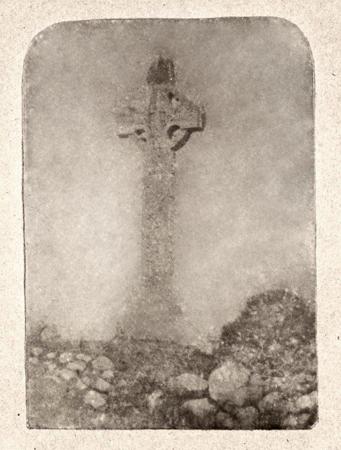PRONI: Snapshots of the past
Date published:
PRONI’s August document of the month focuses on several documents that depict the early inception of photography processes.

The documents include a Calotype negative and Glass Plate negatives.
Garreth Montgomery who chose the documents said: “The Public Record Office holds a wide variety of photographs which chart the development of photographic techniques, from the inception of the process to our modern day digital images.
“One of the most fascinating and probably the oldest image we hold is a Calotype negative, which dates from around 1843. Our calotype negative was discovered between the leaves of a journal written by Robert Shipboy McAdam of his voyage to France on board the steamer Hibernia on 1834. McAdam who was the owner of the Soho Iron Works in Belfast or a later reader of the journal had been using the negative as a bookmark! It shows a faint and grainy image of a castle beside a lake.
“Calotypes were first used to produce Salt Paper prints, a simple process which involved soaking the paper in salt water. Our example of this is from a collection of antiquarian Alexander Johns from Carrickfergus and depicts an Irish High Cross. Unfortunately, we do not know where the cross is located but contextual evidence would suggest it was taken around 1852-1853.

“As photography became more popular the lack of detail and contrast in Salt Prints prompted the invention of a more stable and durable means of making prints, namely the Albumen print. This process used the albumen found in egg whites to bind the chemicals to the paper. Our examples of these originate from the Stewart family and depict members of the Royal North Down Rifles in uniform.
“Along with the development of the Albumen prints came the Glass Plate negative. First came the Collodion wet plates by the 1850s and then in the 1880s came the Gelitin Dry plates. These were vastly superior to the Calotype negative due to the quality and detail produced. Also numerous copies could be made from one negative. PRONI holds lots of glass plate negatives and notable examples include the extensive collection of H.F Cooper from Strabane and Herbert Allison from Armagh.
“The development of the Glass Plate negative enabled and ‘upgrade’ of a popular pastime of the era. Magic Lantern shows, the forerunners to modern slide projectors, have been documented as far back as the 17th century. As equipment became cheaper and more widely available people were investing in their own lantern shows.”
During August, PRONI will host an exhibition of a collection of lantern slides known as ‘Castleton Lanterns’ which depict soldiers and sailors who served during the First World War from York Street and Castleton Presbyterian Churches and were only discovered in the organ loft of Alexandra Presbyterian Church, Belfast in early 2013.
Notes to editors:
- The PRONI reference number for the calotype image is D2930/7/3A
- The PRONI reference number for the Irish High Cross image is D1488/3/50A
- The PRONI reference number for the Albumen Print is D4567/1/1
- Many images from both the Cooper and Allison collections can be viewed on PRONI’s Flickr
- Follow us on twitter @CommunitiesNI
- For media enquiries please contact the Department for Communities Press Office on 028 9082 9267 or email press.office@communities-ni.gov.uk. For out of hours please contact the Duty Press Officer via pager number 07699 715 440 and your call will be returned.